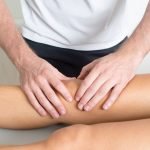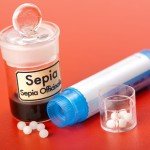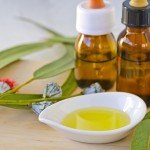Endometriosis: Theories, Evidence, and Treatment
Pamela Frank, BSc (Hons), ND
Tolle Totum
Endometriosis is a condition in which endometrial lining escapes the uterus, attaches to structures in the peritoneal cavity, and causes pain as the tissue grows in response to monthly fluctuations in estrogen. Endometrial tissue has been found in endometriosis patients as high as their lungs, where it can cause catamenial pneumothorax.1 Like the uterine lining, this tissue is sensitive to hormonal changes, growing in response to increases in estrogen levels. This growing tissue puts pressure on surrounding tissues and nerves, causes adhesion formation, and can bleed during menstruation. The pain can be present throughout a woman’s menstrual cycle, not just at menstruation, and can be both excruciating and debilitating. Conventional treatment usually involves hormonal suppression and/or laparoscopic surgery. The rate of recurrence of endometriosis after laparoscopic surgery is estimated to be between 40-50% within 5 years; approximately 21.5% of women experience recurrence within 2 years.2
Endometriosis Pathogenesis Theories
- Sampson Hypothesis: Retrograde Menstrual Flow – This theory suggests that the cause of endometriosis is menstrual blood flowing in the wrong direction, out the fallopian tubes and into the abdomen. Anything that would encourage this backward flow is discouraged, eg, head stands, certain yoga poses on heavy flow days, and tampon use. Although retrograde menstruation appears to be a near-universal occurrence (76-90% of all women are estimated to experience this3), women with endometriosis have higher volumes of refluxed menstrual blood and endometrial tissue fragments than do women without the disorder. Some women appear to be at particular risk for developing endometriosis, perhaps through some of the mechanisms mentioned below.
- Tampon Use – Aside from the possibility of obstructing proper menstrual flow, there has also been research linking dioxin (a byproduct of bleach) to endometriosis. Bleached tampons may introduce dioxin into a woman’s system; however, a study by the Environmental Protection Agency concluded that personal care products and bleached coffee filters do not expose women to significant amounts of dioxin, whereas dietary intake from red meat and dairy products was significant.4
- Autoimmune/Altered Immunity – Some new research is suggesting that endometriosis may have an autoimmune component due to a high level of anti-endometrial antibodies found in endometriosis patients.5 Whether this is a result of endometriosis or a cause of it remains to be seen. It would be expected that the immune system would generate antibodies against endometrial tissue in a foreign location in an attempt to resolve endometriosis implants. A 1988 survey conducted in the United States found significantly more hypothyroidism, fibromyalgia, chronic fatigue syndrome, autoimmune diseases, allergies and asthma in women with endometriosis compared to the general population.6
- Estrogen Dominance – Typical North American diets, sedentary lifestyle, and our polluted environment set the stage for estrogen dominance, promoting estrogen’s influence on endometrial tissue.7,8 Studies in mice have shown that estrogen can promote B-cell activation and production of autoimmune antibodies.9 Estrogen dominance may contribute to altered immunity, which then contributes to development and/or progression of endometriosis. The one menstrual characteristic that has been linked to endometriosis is shortened cycle length, ie, less than 28 days,10 suggesting that progesterone insufficiency may contribute to this disorder.
- Excess Telomerase Activity – Telomerase is an enzyme in the lining of the uterus that has been shown to be overly active in women with endometriosis.11 The enzyme is normally more active through the follicular phase and less so through the luteal phase. As a result of increased telomerase activity, the lining of the womb may become more hostile to an early pregnancy, and the cells that are shed at this late stage in the menstrual cycle may be more “aggressive” and more able to survive and implant outside the uterus, causing pain in the pelvic or abdomen area.
- Coelomic Metaplasia – This theory proposes that cells that line the abdominal cavity can differentiate into endometrial tissue. Support for this theory is based on evidence of endometriosis lesions in a woman with complete uterine agenesis,12 and endometriosis in males.13
- Genetic Predisposition – Mothers and sisters of a woman with endometriosis are at a 7-fold increased risk of developing the disease.14
Naturopathic Approaches to Endometriosis
Naturopathic treatment goals for endometriosis include:
- Resolution of existing endometriosis tissue
- Moderation of endometrial tissue escape
- Pain relief
- Enhanced detoxification and excretion of excess estrogen and xenoestrogens
- Moderation of estrogen activity through proper diet, stress reduction, and exercise
Resolving Endometriosis Tissue
The immune system is responsible for identifying and resolving this anomalous tissue. Acupuncture can be used to help stimulate immune system activity in the abdomen and enhance resolution of endometrial implants.15
Castor oil packs (Ricinus communis) work to dissolve foreign tissue growth, including endometriosis. An article in the Journal of Naturopathic Medicine found that castor oil packs were effective as an anti-toxin and for enhanced immunological function.16
Pain Relief
Acupuncture works amazingly well to relieve pain of any type, including endometriosis pain.17
Rosmarinus officinalis (rosemary) is a potent anti-inflammatory, possibly due to the polyphenol, rosmanol, and downregulation of NF-KappaB.18 Curcumin has been demonstrated to inhibit MMP-3 and induce regression of endometriotic lesions in a mouse model of endometriosis.19 And, as described below, resveratrol and melatonin may have analgesic effects in endometriosis.
Detoxification of Excess Estrogen and Xenoestrogens
Estrogen activity is increased when insulin levels are high, so maintaining steady blood sugar and increasing insulin sensitivity can modulate estrogen activity.20,21 Xenoestrogens can contribute to symptoms of estrogen dominance (Table 1).22
Table 1. Sources of Xenoestrogens
| Commercially raised, non-organic meats |
| Commercial dairy products |
| Bisphenol A (BPA) |
| Environmental pollution |
| Laundry detergent |
| Dryer sheets and fabric softeners |
| Personal care products containing parabens or phenoxyethanol |
| Air fresheners containing phthalates |
Progesterone Insufficiency/Luteal Phase Defect
Progesterone-based medication has been standard medical treatment for endometriosis. Supporting progesterone production through healthy diet, and also balancing the estrogen/progesterone ratio with herbs such as Vitex agnus-castus have been clinically helpful in endometriosis.
Hepatic Detoxification
Efficient detoxification of hormones and xenoestrogens requires nutritional support of liver function.
Phase I detoxification requires:
- Vitamins: B2, B3, B6, B12, folic acid (in the form of 5-methyl-tetrahydrofolate (5-MTHF), beta-carotene, vitamin A, C, E
- Minerals: Copper, manganese, selenium, zinc
Phase II detoxification requires:
- Cysteine, methionine
- Sulfur
Intestinal Health
Endometriosis patients often have concomitant bowel issues or IBS.23 Reducing bowel inflammation can ease endometriosis associated pain. A healthy digestive tract also allows more efficient excretion of estrogen or xenoestrogens. One study demonstrated that Lactobacillus gasseri OLL2809 suppressed development of endometriosis via activation of natural killer cells.24
Diet
A clean, whole foods, low-glycemic index, low-glycemic load diet that is free from immune-suppressing foods like sugar, processed carbohydrates, red meat, dairy, GMO foods, and additives and preservatives is essential to expedite resolution of endometriosis tissue (Table 2).
Table 2. Dietary Recommendations
| Foods to Avoid |
|
|
|
|
|
| Foods to Emphasize |
|
|
|
Traditional Chinese Medicine
A Traditional Chinese herbal formula containing Ramulus Cinnamomi, Poria, Cortex Moutan, Radix Paeoniae Rubra, and Semen Persicae plays an important role in the regression of endometriotic implants via immunological regulation in a rat model. Rats were given either a low-dose (480 mg/kg/day) or high-dose (1920 mg/kg/day) treatment.32
Supplements for Endometriosis
- Pinus maritima (pycnogenol): Pycnogenol is a powerful antioxidant from the bark of the pine tree. It is known to improve egg and sperm health. A 2007 study revealed a 33% reduction in endometriosis symptoms after 48 weeks of 60 mg of pycnogenol per day.33
- Resveratrol: Supplementation with 30 mg per day of resveratrol along with an oral contraceptive was found to significantly improve and even resolve dysmenorrhea and pelvic pain in endometriosis patients.34
- Melatonin: A study found that 10 mg per night of melatonin had an analgesic effect on endometriosis-associated chronic pelvic pain and improved sleep quality. Additionally, melatonin was found to modulate the secretion of brain-derived neurotrophic factor and pain through distinct mechanisms.35
- N-acetylcysteine (NAC): Supplementation with 600 mg TID of NAC was found to decrease endometrial cyst mean diameter, compared to a significant increase in cyst diameter in untreated patients.36
- Indole-3-carbinol (I3C): I3C may help endometriosis by increasing phase II liver enzyme activity, particularly glutathione-S-transferase (GST).37
- Calcium-D-glucarate: Glucuronidation occurs during the second phase of liver detoxification and is the process of conjugating hormones, carcinogens, or other lipid‑soluble toxins with glucuronic acid so that they can be excreted via the biliary tract. Bacterial β‑glucuronidase in the gut can deconjugate these complexes, making it possible for the toxins to be reabsorbed into the body. Calcium-D‑glucarate has the ability to reduce the β‑glucuronidase activity of intestinal bacteria, thereby allowing more efficient toxin and conjugated hormone excretion.38
- Vitamin D3: In a rat model of endometriosis, administration of vitamin D3 resulted in a significant reduction in the cross-sectional area of endometriosis cysts.39
- Curcumin: In a mouse model of endometriosis, curcumin was shown to reduce inflammation through inhibition of NFkappaB and to cause regression of endometriotic lesions.19
A Typical Protocol for Endometriosis
As discussed, the diet should consist of clean, organic, whole foods that are low-glycemic index, low-glycemic load, and high fiber, and free from immune-suppressing foods like sugar, processed carbs, red meat, dairy, GMO foods, and additives and preservatives. In addition, the following treatments are often helpful:
- B Complex with 5-MTHF – 1 capsule BID with food
- I3C – 400 mg once per day with food for one month, then reassess
- Calcium-D-glucarate – 650 mg per day with food for one month, then reassess
- Melatonin – 3-10 mg 1-2 hours before bed
- NAC – 600 mg TID with food for 3 months
- Pycnogenol – 60 mg once per day with food
- Resveratrol – 30 mg per day with food
- Curcumin (sustained-release) – 1000 mg BID
- Vitex agnus-castus – 1 tsp TID
- Probiotics – at least 50 billion CFU 2-3 times per day with food
- Vitamin D3 – 1000 IU TID with food
- Castor oil packs nightly over the lower abdomen
- Acupuncture – once per week for 6 weeks, then monthly between cycle days 6 and 13
 Pamela Frank, BSc (Hons), ND has 14 years of experience as an naturopathic physician and 20 years as a medical laboratory technologist. She is clinic director of Forces of Nature Wellness in Toronto and was twice voted “Best Naturopath in Toronto.” Pamela maintains a busy practice with particular expertise in women’s health issues, PCOS, PMS, menopause, acne, infertility, uterine fibroids, and endometriosis. Other passions include her family, new puppy Odie, tennis, running, cycling, volleyball and healthy cooking. For more information, visit: www.NaturopathToronto.ca.
Pamela Frank, BSc (Hons), ND has 14 years of experience as an naturopathic physician and 20 years as a medical laboratory technologist. She is clinic director of Forces of Nature Wellness in Toronto and was twice voted “Best Naturopath in Toronto.” Pamela maintains a busy practice with particular expertise in women’s health issues, PCOS, PMS, menopause, acne, infertility, uterine fibroids, and endometriosis. Other passions include her family, new puppy Odie, tennis, running, cycling, volleyball and healthy cooking. For more information, visit: www.NaturopathToronto.ca.
References
- Haga T, Kurihara M, Kataoka H, Ebana H. Clinical-Pathological Findings of Catamenial Pneumothorax: Comparison between Recurrent Cases and Non-Recurrent Cases. Ann Thorac Cardiovasc Surg. 2013 May 23. [Epub ahead of print]
- Guo SW. Recurrence of endometriosis and its control. Hum Reprod Update. 2009;15(4):441-461.
- Halme J, Hammond MG, Hulka JF, et al. Retrograde menstruation in healthy women and in patients with endometriosis. Obstet Gynecol. 1984;64(2):151–154.
- Daughton CG, Ternes TA. Pharmaceuticals and personal care products in the environment: agents of subtle change? Environ Health Perspect. 1999;107(Suppl 6):907–938.
- Nothnick WB. Treating endometriosis as an autoimmune disease. Fertil Steril. 2001;76(2):223-231.
- Sinaii N, Cleary SD, Ballweg ML, et al. High rates of autoimmune and endocrine disorders, fibromyalgia, chronic fatigue syndrome and atopic diseases among women with endometriosis: a survey analysis. Hum Reprod. 2002;17(10):2715–2724.
- Reddy BS, Rozati R, Reddy S, et al. High plasma concentrations of polychlorinated biphenyls and phthalate esters in women with endometriosis: a prospective case control study. Fertil Steril. 2006;85(3):775-779.
- Itoh, Hiroaki, et al., Urinary bisphenol-A concentration in infertile Japanese women and its association with endometriosis: A cross-sectional study. Environ Health Prev Med. 2007;12(6):258-264.
- Verthelyi DI, Ahmed SA. Estrogen Increases the Number of Plasma Cells and Enhances Their Autoantibody Production in Nonautoimmune C57BL/6 Mice, Cell Immunol. 1998;189(2):125–134.
- Arumugam K, Lim JM. Menstrual characteristics associated with endometriosis. Br J Obstet Gynaecol. 1997;104(8):948-950.
- Hapangama DK, Turner MA, Drury, JA, et al. Endometriosis is associated with aberrant endometrial expression of telomerase and increased telomere length. Hum Reprod. 2008;23(7):1511-1519.
- Mok-Lin EY, Wolfberg A, Hollinquist H, Laufer MR. Endometriosis in a patient with Mayer-Rokitansky-Küster-Hauser syndrome and complete uterine agenesis: evidence to support the theory of coelomic metaplasia. Pediatr Adolesc Gynecol. 2010;;23(1):e35-e37.
- Martin JD Jr, Hauck AE. Endometriosis in the male. Am Surg. 1985;51(7):426-430.
- Moen MH, Magnus P. The familial risk of endometriosis. Acta Obstet Gynecol Scand. 1993;72:560–564.
- Kim SK, Bae H. Acupuncture and immune modulation. Auton Neuroscie. 2010;157(1-2):38-41.
- Grady H. Immunomodulation Through Castor Oil Packs. Journal of Naturopathic Medicine. [Unknown year];7(1):84-89.
- Wilkinson J, Faleiro R. Acupuncture in pain management. Contin Educ Anaesth Crit Care Pain. 2007;7(4):135-138.
- Lai CS, Lee JH, Ho CT, et al. Rosmanol potently inhibits lipopolysaccharide-induced iNOS and COX-2 expression through downregulating MAPK, NF-kappaB, STAT3 and C/EBP signaling pathways. J Agric Food Chem. 2009;57(22):10990-10998.
- Jana S, Paul S, Swarnakar S. Curcumin as anti-endometriotic agent: implication of MMP-3 and intrinsic apoptotic pathway. Biochem Pharmacol. 2012;83(6):797-804.
- Nagamani M, Stuart CA. Specific binding and growth-promoting activity of insulin in endometrial cancer cells in culture. Am J Obstet Gynecol. 1998;179(1):6–12.
- Plymate SR, Matej SA, Jones RE, Friedl KE. Inhibition of sex hormone-binding globulin production in the human hepatoma (Hep G2) cell line by insulin and prolactin. J Clin Endocrinol Metab. 1988;67(3):460-464.
- Heikaus S, Winterhager E, Traub O, Grümmer R, Responsiveness of endometrial genes Connexin26, Connexin43, C3 and clusterin to primary estrogen, selective estrogen receptor modulators, phyto- and xenoestrogens. J Mol Endocrinol. 2002;29(2):239-249.
- Issa B, Onon TS, Agrawal A, et al. Visceral hypersensitivity in endometriosis: a new target for treatment? Gut. 2012;61(3):367-372.
- Itoh H, Sashihara T, Hosono A, et al. Lactobacillus gasseri OLL2809 inhibits development of ectopic endometrial cell in peritoneal cavity via activation of NK cells in a murine endometriosis model. Cytotechnology. 2011;63(2):205-210.
- Marziali M, Venza M, Lazzaro S, et al. Gluten-free diet: a new strategy for management of painful endometriosis related symptoms? Minerva Chir. 2012;67(6):499-504.
- Nilsson M, Stenberg M, Frid AH, et al. Glycemia and insulinemia in healthy subjects after lactose-equivalent meals of milk and other food proteins: the role of plasma amino acids and incretins. Am J Clin Nutr. 2004;80(5):1246-1253.
- Parazzini F, Chiaffarini F, Surace M, et al. Selected food intake and risk of endometriosis. Hum Reprod. 2004;19(8):1755-1759.
- Schepens PJ, Covaci A, Jorens PG, et al. Surprising findings following a Belgian food contamination with polychlorobiphenyls and dioxins. Environ Health Perspect. 2001;109(2):101–103.
- Covaci A, Gheorghe A, Schepens P. Distribution of organochlorine pesticides, polychlorinated biphenyls and alpha-HCH enantiomers in pork tissues. Chemosphere. 2004;56(8):757-766.
- Kojima H, Katsura E, Takeuchi S, et al. Screening for estrogen and androgen receptor activities in 200 pesticides by in vitro reporter gene assays using Chinese hamster ovary cells. Environ Health Perspect. 2004;112(5):524–531.
- Missmer SA, Chavarro JE, Malspeis S, et al. A prospective study of dietary fat consumption and endometriosis risk. Hum Reprod. 2010;25(6):1528-1535.
- Ji X, Gao J, Cai X, et al. Immunological regulation of Chinese herb Guizhi Fuling Capsule on rat endometriosis model. J Ethnopharmacol. 2011;134(3):624-629.
- Kohama T, Herai K, Inoue M. Effect of french maritime pine bark extract on endometriosis as compared with leuprorelin acetate. J Reprod Med. 2007;52(8):703-708.
- Maia H Jr, Haddad C, Pinheiro N, Casoy J. Advantages of the association of resveratrol with oral contraceptives for management of endometriosis-related pain. Int J Womens Health. 2012;4:543-549.
- Schwertner A, Conceicao Dos Santos CC, Costa GD, et al. Efficacy of melatonin in the treatment of endometriosis: a phase II, randomized, double-blind, placebo-controlled trial. Pain. 2013;154(6):874-881.
- Porpora MG, Brunelli R, Costa G, et al. Evid Based Complement Alternat Med. 2013;2013:240702.
- Krajka-Kuźniak V, Szaefer H, Bartoszek A, Baer-Dubowska W. Modulation of rat hepatic and kidney phase II enzymes by cabbage juices: comparison with the effects of indole-3-carbinol and phenethyl isothiocyanate. Br J Nutr. 2011;105(6):816-826.
- Calcium-D-glucarate. Altern Med Rev. 2002;7(4):336-339.
- Abbas MA, Taha MO, Disi AM, Shomaf M. Regression of endometrial implants treated with vitamin D3 in a rat model of endometriosis. Eur J Pharmacol. 2013;715(1-3):72-75.









